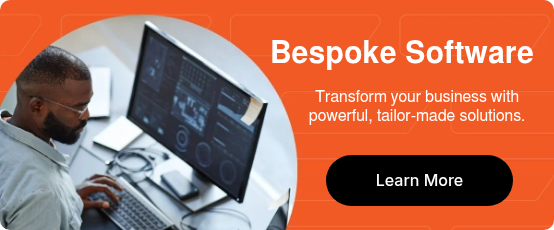Why it pays to write a working MVP / prototype before seeking investment
In the world of startups, capturing the interest of investors is as crucial as it is challenging. Funding from investors is what many start-ups will rely on to project their vision forward into reality, and investors are keen on seeing not just ideas but real traction and evidence of product-market fit. This is where your Minimum Viable Product (MVP) or a prototype can help! An MVP is a powerful way to demonstrate your product, receive essential feedback and reduce investor risk.
If you’re a startup founder interested in how an MVP can help you along your journey, we’ve created this article to help you fully understand the benefits of creating a prototype before seeking investment.
What is an MVP and what benefits does it bring?
An MVP, in its simplest form, is a basic version of your product that includes just enough features to attract early adopters and validate a product idea early in the development lifecycle. The power of an MVP lies in the fact that it's often cheap to build and a good platform to iterate on. Perfect for the start of your journey, an MVP will help you to communicate the need and demand for your solution to investors, keeping that all important investment money coming in.
Real-world example: The power of a prototype
Let’s talk about a recent example (we’ll keep names out of it). A company in the FinTech space developed a clickable prototype of their product to demonstrate the problem it was designed to solve – end-to-end rebate processing automation . This wasn’t the final product by any means, but it was good enough to show potential customers how it would work. They managed to sell this concept to their first customer, which was a huge win. Why? Because this initial success led directly to a round of funding. Investors saw that someone was willing to pay for the product, which was a clear indicator of its potential success. Not only was funding forthcoming but this company was then able to advertise its first customer win, giving new prospects confidence in purchasing the product for themselves.
Gathering Feedback For Better Products
One of the biggest advantages of having an MVP is the ability to gather feedback early on. When you introduce a prototype into the market, you start receiving immediate reactions from users. Feedback in the early stages of any product development cycle is one of the most important factors to your success, it helps you understand if you’re on the right track, what needs to be tweaked, and what features are a hit or miss. Early feedback also shows potential investors that you’re committed to creating a product that meets market needs and are flexible enough to pivot as required.
An MVP also helps with:
- Resource optimisation: MVPs help save time and resources by focusing on essential features and avoiding overbuilding.
- Market validation: With your MVP you are testing the market with minimal cost and effort, ensuring there is demand before full scale production.
- Early adopter attraction: An MVP will bring in early adopters who will become advocates for the product after successful implementation.
Reducing Investor Risk and Building Confidence with an MVP
Investors are always mindful of risk. An MVP significantly reduces this risk by demonstrating a working model and real user interest. This isn’t just an idea on paper; you’re providing evidence of its viability with a tested prototype and market validation. This builds confidence among potential investors, showing that you have more than just a concept—you have a tested, initial version of a product that has genuine market appeal, meaning they are more likely to invest.
Conclusion
In conclusion, if you're planning to seek investment for your startup, putting your time and resources into developing an MVP or prototype can be a game-changer. It proves your business concept, reduces risk, and significantly increases your chances of securing investment. Remember, in the competitive startup ecosystem, having a prototype can be the difference between a yes and a no from potential investors.
If you're ready to get started creating your MVP, talk to us at Evolved ideas.

